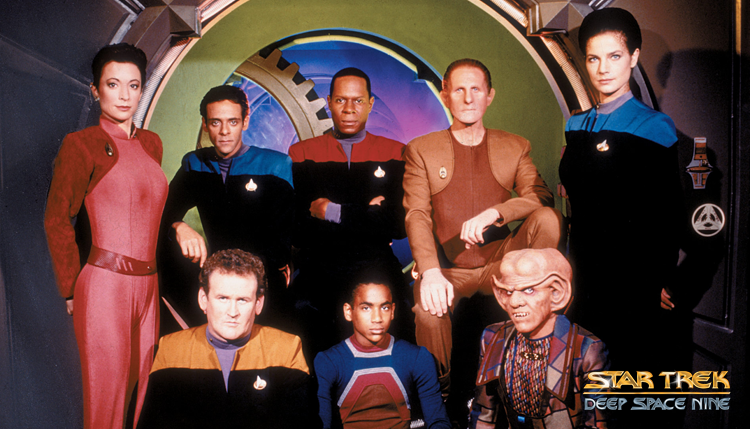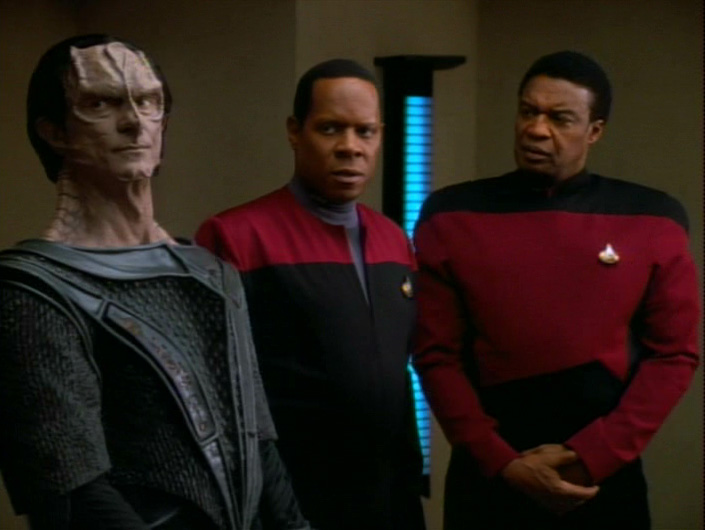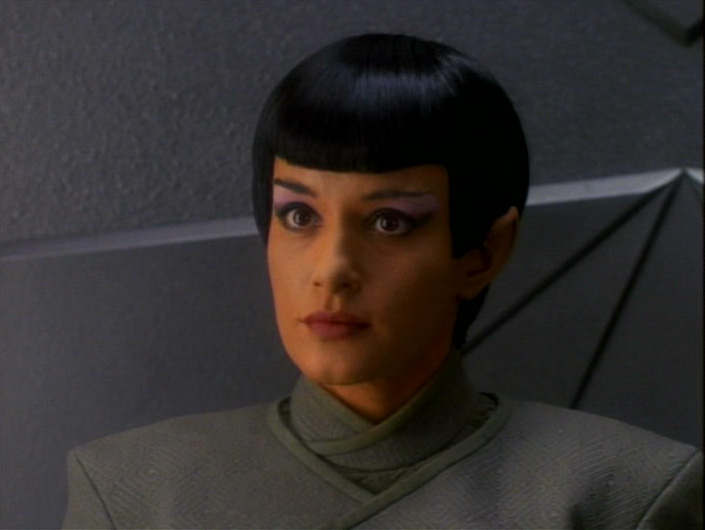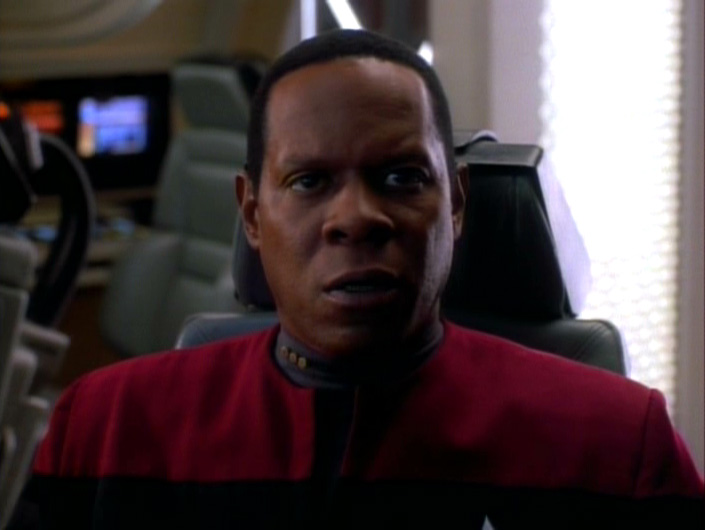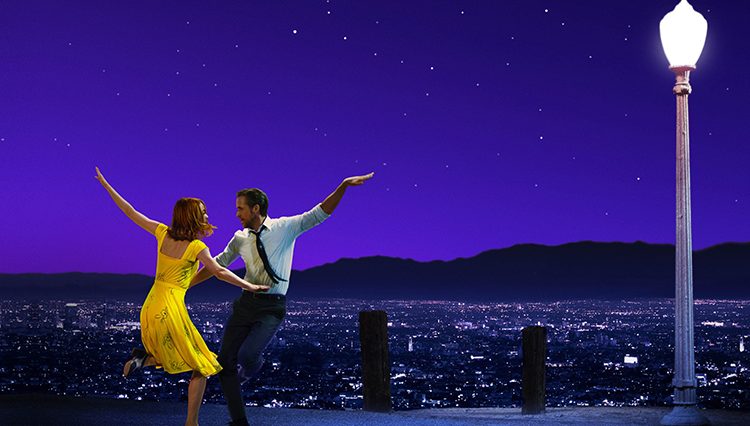“On Earth, there is no poverty, no crime, no war. You look out the window of Starfleet Headquarters and you see paradise. Well, it’s easy to be a saint in paradise, but the Maquis do not live in paradise. Out there in the Demilitarized Zone, all the problems haven’t been solved yet. Out there, there are no saints — just people. Angry, scared, determined people who are going to do whatever it takes to survive, whether it meets with Federation approval or not!”
Deep Space Nine was a series that profited from world-building. Think of it as living in a dusty, dangerous frontier where the people come to you instead of the traditional Wagon-Train-to-the-stars format of earlier and later shows. Nearly every episode was about (at its most basic) world-building; flawlessly executed and never boring. This is why fans have bitter arguments over canon (adherence to or rejection of) in the wake of the more recent movies and shows. So much time was spent creating a vivid yet fictional universe for the characters to inhabit that deviation could be jarring for longtime fans.
“The Maquis” two-parter is one of the most important components of that expanded universe. The obvious analogy is World War II when Germany stormed unchecked through most of Europe, snatching up and annexing strategic territories; the murder and liquidation of the Jews. Let’s assume the Cardassians are the Germans, and the Bajorans are the Jews for purposes of comparison. Let’s assume the Americans are the United Federation of Planets, and like the Americans, delayed their entry into the war.
After years of occupation, the Cardassians withdraw, but “Demilitarized Zones” are created, and within those zones reside Federation citizens, Starfleet personnel, and Bajorans. To those people, it looks as though the Federation has appeased the Cardassians by allowing them to control key sectors and, perhaps, escape justice for their war crimes, continuing the allusion to Germany. We’ve seen this cultural and social divide in episodes like Next Generation’s “The Wounded” and Deep Space Nine’s “Duet.”
No one could simply draw up a contract, a cessation of hostility, and expect peace to blossom overnight. A Cardassian ship blows up (but good) right after leaving the station. Sisko and his crew get right to work investigating the explosion. They find elements in the debris that could only have come from their neck of the woods. Starfleet sends Sisko’s old friend Cal Hudson (Bernie Casey). He remembers Ben back when he was a happy husband. Maybe he even manipulates him to some degree to make his anger come alive, but Sisko never had a grudge with Cardassians, like O’ Brien or Kira.
A Vulcan woman approaches Quark looking to purchase weapons. While Quark is a treacherous, money-grubbing, pragmatist, it seems he does draw a line at selling weapons (at least until season five’s “Business as Usual”), possibly because of the consequences if he were caught. The Vulcan woman confuses me, though. Why would she be a member of a terrorist organization in a part of the galaxy that doesn’t involve her? Why would she put herself in danger to support a cause that promotes some form of irrationality? I hate to use the word, but it’s not logical.
Other than that, we have a taut mystery and a sad conclusion. How the two-parter succeeds is in characterization. We learn a wealth of information about Gul Dukat, who inserts himself into the action when he insists on accompanying Sisko to the Demilitarized Zone to confirm his suspicion that “renegade” Starfleet personnel were responsible for the destruction of the freighter. We again sense the schism between Kira (who is indifferent) and Sisko. Sisko is there to negotiate for the release of a resident Starfleet officer but discovers the officer “committed suicide.” Afterward, Dukat is abducted by a group calling itself … the MAQUIS!
The analogy to World War II continues. Those who identified themselves as Maquisards were French Resistance fighters during the war. They escaped conscription into Germany’s labor force, took up arms and started fighting the German war machine. These were good-looking, French, young men and women all wearing berets and carrying machine guns. Somebody should make a movie about this. It’s a subject that has always intrigued me. Cal Hudson reveals himself, in short order, to be a member of the Maquis.
This didn’t come as a surprise to me. He hates the Cardassians, and he and Sisko engage in debate about the topic for the majority of the second episode, so I pretty much picked up on where the story was going. It isn’t just Starfleet and Federation personnel or Bajorans involved in the Maquis. It’s Klingons, Vulcans; it’s anybody upset with what they consider appeasement. This is much bigger than Sisko’s anger at his friend shirking his responsibilities. It is a story that continues until Star Trek: Voyager’s fourth season episode, “Hunters,” and had carried over into all three of the franchise’s new series, but it was on Deep Space Nine that the Maquis were first revealed.
Star Trek Rewind explores the Star Trek universe. From Archer to Janeway, Kirk to Picard, and Georgiou to Sisko — boldly read what no one has read before!


